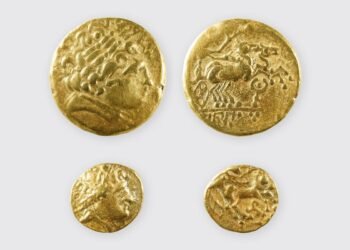Archaeologists from the University of Tokyo have unearthed what they believe could be traces of the Villa of Augustus, the first Roman Emperor at Somma Vesuviana in southern Italy.

Somma Vesuviana, located on the northern side of Mount Vesuvius, has long been recognized for its ancient Roman ruins buried beneath volcanic ash. The team’s excavations, ongoing since 2002, have shed new light on this historical site.
The recent findings include a structure dating back nearly 2,000 years, buried under volcanic deposits from the eruption of CE 79. This building, suspected to be a villa, showcases architectural features typical of wealthy Roman residences. The discovery of a room possibly used for a private bath, along with evidence of a kiln, suggests luxurious living quarters, fitting for an influential figure like Augustus.
Radiocarbon dating of charcoal samples from the villa indicates its primary use in the early 1st century CE, aligning with historical records of Augustus’s presence in the region during that time. Professor Emeritus Aoyagi Masanori of the University of Tokyo said: “This is a major development that will help us determine the damage caused to the northern side of Vesuvius and get a better overall idea of the eruption in 79.”

The presence of personal baths in the villa, coupled with its abandonment coinciding with Augustus’s death, strengthens the hypothesis of its association with the Emperor. Additionally, the subsequent construction of a large temple-like structure atop the villa site supports this theory.
The excavation also provides crucial data on the impact of the CE 79 eruption. Previous beliefs held that the eruption’s devastation primarily affected the south side of Mount Vesuvius, notably Pompeii and Herculaneum. However, the discovery of collapsed walls and scattered roof tiles at Somma Vesuviana indicates significant damage caused by pyroclastic surges and flows on the northern foothills of the volcano.
“Until now, it was thought that the impact of the eruption in CE 79 at Somma Vesuviana was limited… This survey has shown that the impact of the eruption at that time was greater.” said Professor Toshitsugu Fujii, a volcanology expert involved in the research.
The eruption of Mount Vesuvius in CE 79 remains one of history’s most catastrophic natural disasters, with volcanic ash, pyroclastic surges, and flows claiming numerous lives and burying entire cities. While Pompeii and Herculaneum have been extensively studied, the extent of destruction on the northern side of Mount Vesuvius is still being uncovered through ongoing excavations in sites like Somma Vesuviana.























